SEO in Digital Marketing
Just try to picture having a storefront with no windows, names, or other identifying features. You might anticipate that customers who are curious and looking for product A, but you are selling product B, might wander in. Now, when you have a store with a respectable name and likely an image of the product on it, this would draw a lot of people from the street, and they would ask for what you sell. Some of these customers would then tell other potential targets about their purchasing experience, your products, and your stores.
While the second example refers to an optimized website, the first example is comparable to a website that is not optimized.
Making a website easier to locate, crawl, and categorize is known as SEO (Search engine optimization). It is about making your company stand out to customers among thousands of alternative options. Any digital marketing approach must include SEO. The main focus is on a comprehensive strategy for using online channels to attract people to your business. And in order to accomplish that, one needs make sure the website appears higher on the SERP (search engine result page).
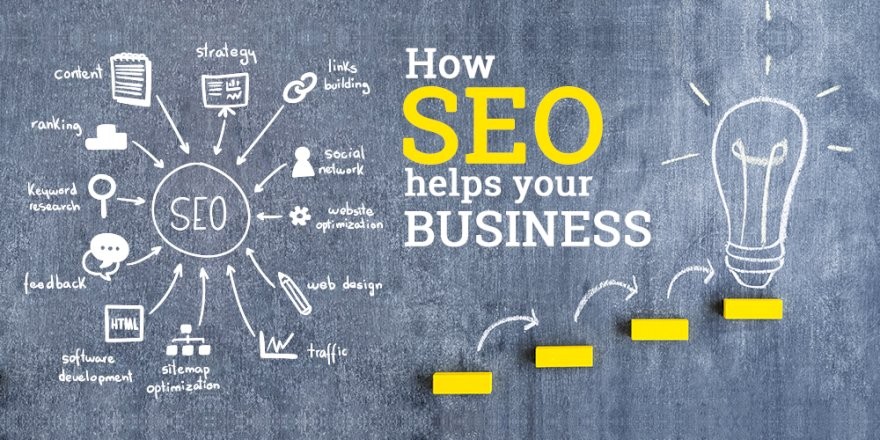
Let’s start with an SEO fact to give you a notion of this: each month, there are close to 14 billion online searches. With the emergence of the global economy, almost every company now has a website. Imagine that a small portion of those 14 billion queries are for your company. To meet that goal, your website must perform well in social media marketing, rank higher in search engine results pages (SERPs), and perform very well across all other aspects of digital marketing.
Advertising is essential to any business. When a company gets online, advertising is the best way to drive a tonne of web traffic. SEO offers the chance for a tonne of free advertising.
A website that uses good SEO will appear on the SERP’s first page. And it’s a widely held idea that users often skim and examine the first two pages of the SERP. Nearly 74% of customers use search engines to find information about nearby businesses. SEO offers a reasonable ROI when compared to online marketing strategies like PPC, social media marketing, and email marketing campaigns. Every day, between 80 and 90 percent of shoppers read online reviews before making a purchase.
How does SEO function?
Search engines are computer programs that scan the content of web pages rather than actual people. Search engines are text-driven, not like people. They carry out several tasks that provide search results, including crawling, scanning, storing (or indexing), courses of action, determining pertinence, and recovering. The difference with an excellence count is that you’re counting design elements as opposed to an individual’s activities. For instance, the following are some of the components that are known to contribute to a quality score:
- URLs and names of websites
- Website Content
- Meta data
- Link’s Characteristics
- Accessibility and usability
- Page layout
Let’s see how the entire cycle functions:
Crawling:
Every search engine has software that “crawls” the content of websites, known as a “crawler” or “spider” (in Google’s case, this is the Googlebot). A crawler cannot check every day to see if a new page has been added or if an old page has been modified; some crawlers may skip a webpage for a month or two. It is crucial to keep in mind what a search engine can and cannot crawl in this regard. Images, Flash movies, JavaScript, frames, password-protected pages, and directories are among the things that are inaccessible to search engines. Therefore, it would be better to do a keyword simulator test to see if these are viewable by the spider if you have the bulk of these on your website. Those that cannot be viewed are not processed, spidered, or indexed. On the other hand, search engines won’t find them.
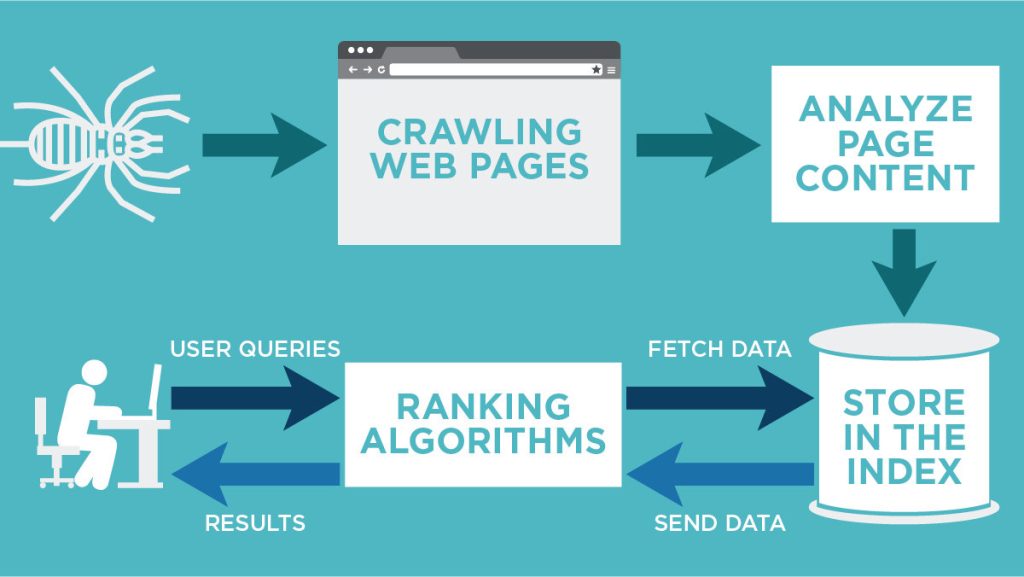
Indexing:
Post-crawling material A related search term or keyword can be used to get an index page that the Spider has saved in a sizable database. This will not be conceivable for humans, yet search engines do this on a daily basis. Search engines can struggle to comprehend the content of a page. And to achieve that, the page must be properly optimized.
Search work:
The search engine examines each search request, comparing the key terms with the sites it has indexed and saved in its database. The identical search terms appear on more than millions of pages. As a result, the search engine measures how relevant each website is to its index and how well it matches the keywords that have been entered in the SERP.
Algorithms:
A search algorithm is a diagnostic tool that analyses a puzzle (when a particular keyword is searched), sorts through a record of catalogued keywords and URLs that have relevance with those keywords, estimates some likely answers, and then returns pages that contain the word or phrase that was searched for, either in the page’s body content or in the URL that leads to the page. There are three search algorithms: whole-site, off-site, and on-site.
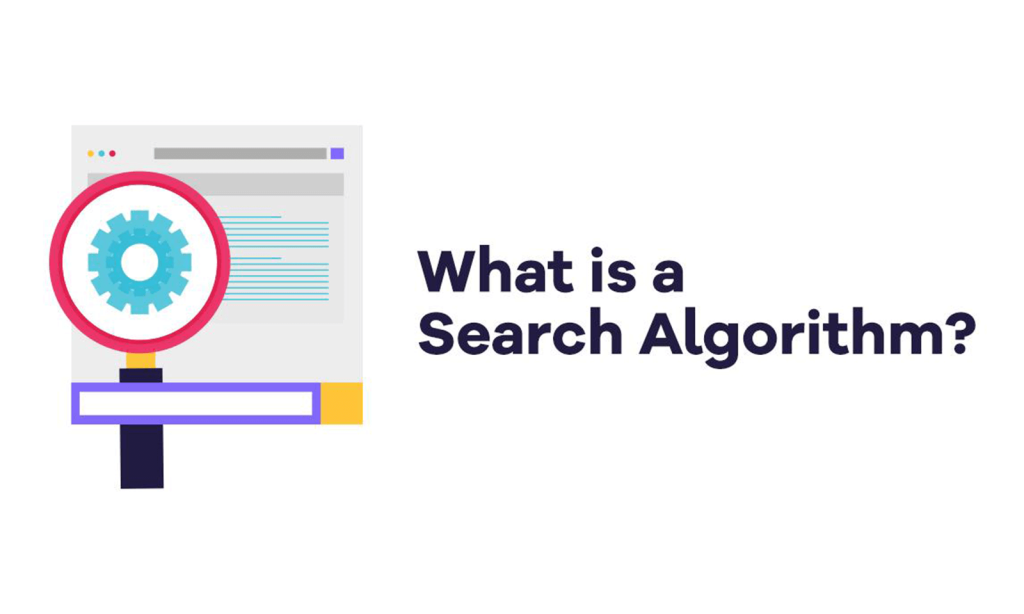
Each algorithm type examines a variety of webpage elements, including Meta tags, title tags, links, keyword density, etc., but they are all a component of a much more comprehensive algorithm. This explains why different search engines with different algorithms produce different results when using the same search term. Additionally, the algorithms of all these search engines—primary, secondary, and targeted—do change from time to time. If you want to stay on top, you must be able to adjust to these changes. Solid SEO knowledge is necessary for this.
Retrieving: The search results will show the final outcome.
Digital marketing and SEO
Evidently, there is no discernible difference between SEO and digital marketing strategies; both carry out the same tasks and require the same abilities. Different titles have done so only for marketing purposes. We must carefully examine these ideas in order to comprehend this. The illustration below makes it quite obvious how SEO fits into the larger category of digital marketing.
The SEO specialists work to increase organic traffic, whereas digital marketers strive to increase a company’s whole online presence (which goes beyond SEO). An SEO consultant typically manages other facets of digital marketing in practice. Additionally, the entire SEO digital marketing service package might be referred to as SEO Packages because this would help buyers understand it more easily.
Along with website optimization and search engine marketing, the modern trend offers a few other services. For instance, some elements, including blogging with SEO content, contextual marketing, behavioral marketing, mobile advertising, Alt-texts in banner advertising, social media marketing, RSS, viral marketing, and video content advertising, truly use SEO in the sense of choosing the proper keywords. A strong SEO and digital marketing strategy should be in place for that.
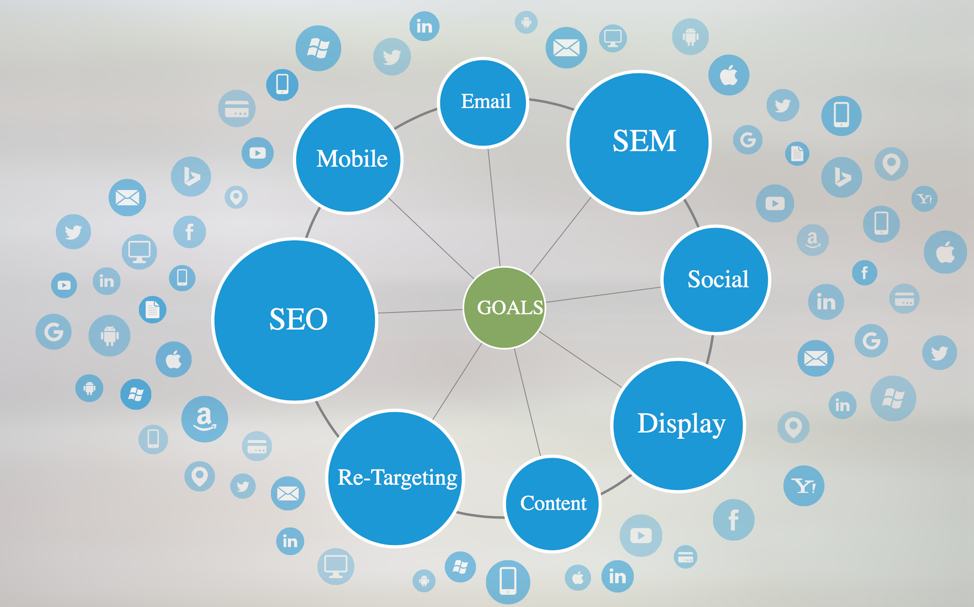
Integrated digital marketing using SEO
And after making great strides, several marketing professionals now refer to SEO as integrated digital marketing. Let’s explain this in more detail.
The usage of SEO is becoming increasingly crucial to the overall success of digital marketing. And if we closely observe how the SEO paradigm has changed over the years, we would have a very good understanding. When the first SEO began to emerge in the mid-1990s, manual submission, the use of the Meta keywords tag, and keyword stuffing were all common practices required to perform well in the SERP. Then, in 2004, interlinking websites were developed, link buying via automated blog comment spam injectors, and anchor text associated link bombing were all used to increase web traffic.
Then, in 2011, vertical search inclusion and social media marketing took over as the most popular SEO techniques. The algorithms of search engines are continually modified in an effort to increase traffic. The strategies employed in 2004 are all no longer effective because the current call is different.
Although the fundamental concepts of title tags, H1 tags, and links—favorite everyone’s topic, according to Google—remain the same, today’s many new memes completely alter the way an SEO consultant originally worked. But many of the applications that were previously unrelated to the criteria we used to evaluate SEO are now.
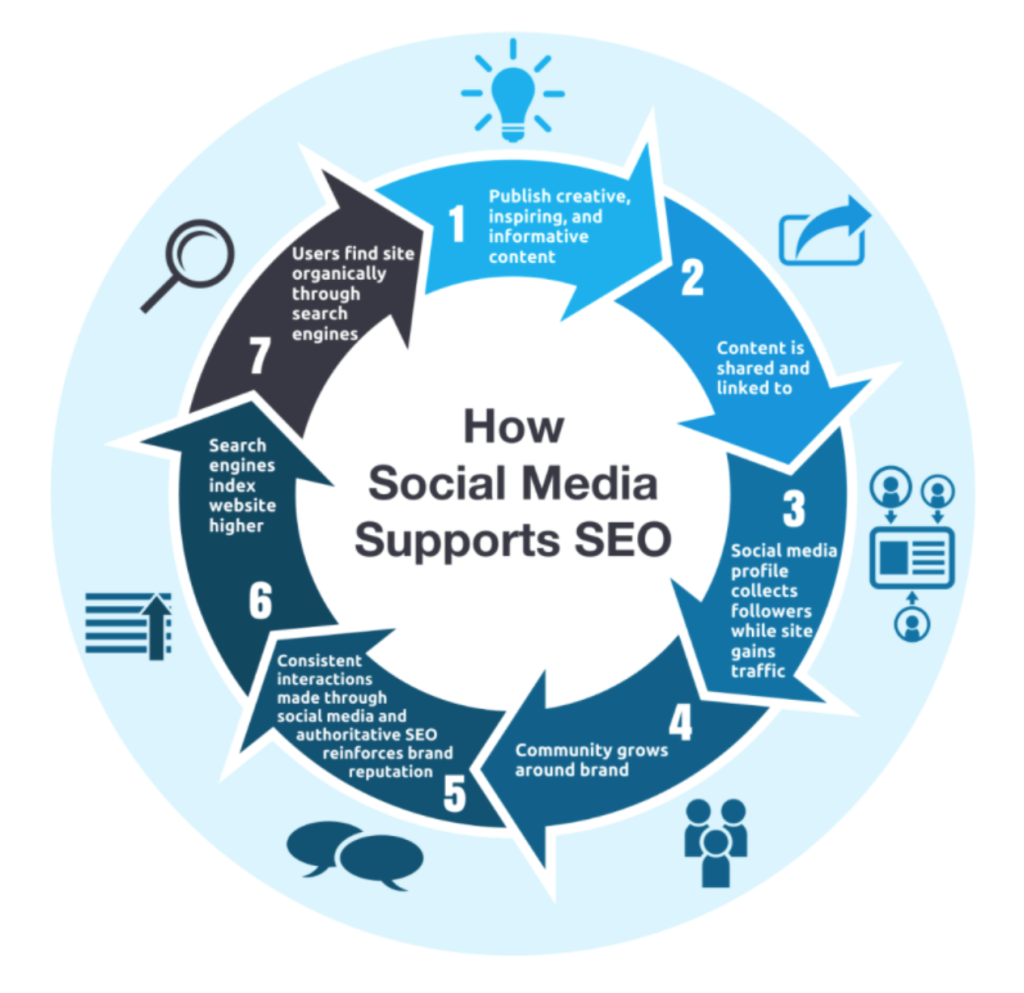
Social media: As viral marketing strategies are being used on Facebook, LinkedIn, Twitter, Yammer, and Google+, social media marketing is becoming more and more important. To fully control SEO potential, these social networking sites must adhere to SEO best practices.
The current strategy is not to build additional links in an effort to rank higher:
Nowadays, one’s reputation is really important. The primary principle of conventional link building is to evaluate all do-follow connections a website can produce and completely disregard any no-follow links. It was standard procedure to create as many links as feasible. Due to flaws in that method that some black-hat marketers exploited, Google eventually modified its algorithms, thus ending the business of traditional link building. Spamming was the term for this. Even guest posting for the sole purpose of building links has failed. Guest blogging is a great way to reach new audiences, establish your expertise, and interact with your niche audience.
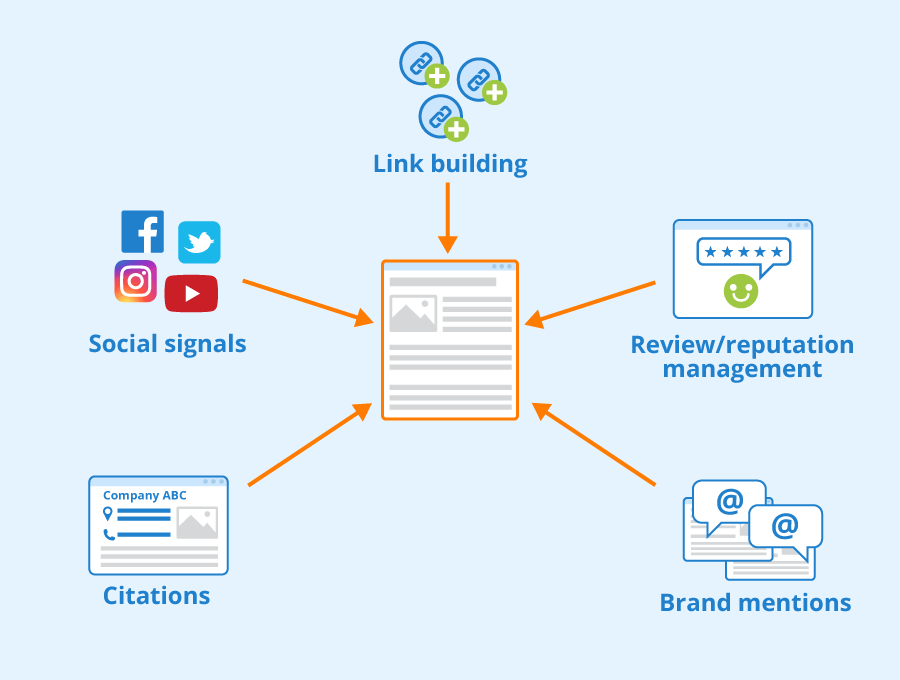
Brand mentions and online citations need to be carefully managed and well integrated into the site content; this can take many different forms. Brand references are frequently linked to the goods or services that are described in the content along with an explanation of how they relate to the content. It might also be in the comments, which are ultimately effectively implicitly included into the text. Any time the name of the company or website is utilized, a brand name or citation is made.
The proportion of conventional linking and brand mentions:
You shouldn’t form the false impression that conventional linking is no longer effective and that brand mentions are the only type of linking that exist today. These two must be balanced with one another. Equal weight must be accorded.
Video optimization is a recent addition to social media optimization:
The modern SEO specialist understands how to properly optimize video material, disseminate it, and assess its effectiveness.
Paid search redefined:
For the best results on both sides of the fence, a co-optimization plan that involves a significant amount of collaboration with the organic search team must be implemented after the paid search initiatives.

Utilization of data:
Another crucial factor is the capacity to effectively comprehend, mine, and apply data to guide strategy and resource allocation within a constrained budget for the maximum ROI (return on investment).
Other elements of contemporary SEO: The most prominent search engines’ algorithms are believed to be heavily influenced by the bounce rate, site speed, and most recently, content above the fold. The tailored keywords produced by organic search strategies are also used in display advertising, behavioral targeting, retargeted marketing, and contextual advertising.
CONCLUSION
The algorithms are constantly updating and putting new hurdles in front of you. Remember that SEO is an ongoing activity; there is no static SEO approach that will stand the test of time. Search engines have also altered their policies in response to shifting online consumer behavior. However, you must realistically consider your target audience, their likes and dislikes, the website’s usability, and well-thought-out optimization strategies. Some people might simply be concerned with their SERP placement and not even consider their users.
After indexing the text, the spiders will evaluate its value and applicability. If it discovers any unethical tactics used to rank in the search results, it will spam it and, in extreme situations, completely block your website. Therefore, the primary duty is to consider your consumers first, including how they use your website, how satisfied they are with it, and how all of this will directly affect the site’s popularity or the amount of time users spend on each page.
Categories
Latest Posts
- Web Designing of Different Websites & their Pros & Cons
- Easy Ways to Grow Your Remarketing Ad Campaigns
- Social Media Marketing: Definition, Strategies, and Trends
- An Introduction to Google Ads
- Facebook, Google, or Bing Ads – Who’s Winning the Race?
- Facebook Marketing in 2023: A COMPREHENSIVE GUIDE
- Facebook monetization
- SEO for Local Business – Do’s and Don’ts
- Web Design’s Impact on Your Digital Marketing Strategy

